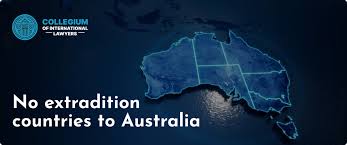- Chưa có sản phẩm trong giỏ hàng.
Đăng bởi : thanh.ws247T4/Th10/2025

The Rise of the Russian Mafia: An Insight into Its Influence and Evolution
The rise of the Russian mafia can be traced back to the turbulent times of the early 20th century, and its trajectory has been shaped by historical, social, and political factors that have defined the Russian landscape. This article delves into the origins, expansion, and contemporary dynamics of the Russian mafia, often referred to as “Bratva,” which translates to “Brotherhood.” Understanding the rise of this criminal organization requires examining the historical contexts in which it flourished, the socio-economic conditions that spurred its growth, and the mechanisms it has employed to maintain its influence.
Historical Context: The Seeds of the Mafia
The roots of the Russian mafia date back to the late 19th and early 20th centuries. During this period, Russia faced significant socio-economic upheaval, characterized by extreme poverty, political repression, and a lack of social mobility. In major urban centers like Saint Petersburg and Moscow, marginalized groups found themselves in desperate situations, leading to the early formation of criminal groups that organized themselves for protection and economic survival.
In the wake of the Bolshevik Revolution of 1917, the traditional power structures were dismantled, giving rise to a lawless environment. The newly formed Soviet government attempted to suppress crime vigorously, but the underground economy thrived in this repressive context. The prison system became a breeding ground for organized crime, as inmates formed loyalty networks that would later extend beyond prison walls.
The Ascent During the Soviet Era
During the Soviet times, particularly from the 1940s to the late 1980s, the mafia continued to develop, often operating under the radar. Criminal groups began to form sophisticated structures, with leaders known as “thieves-in-law” (vory v zakone)—a title conferred upon those who demonstrated loyalty and adherence to a code of ethics within the criminal underworld. These individuals held considerable influence and commanded respect, further solidifying the mafia’s presence in society.

The collapse of the Soviet Union in 1991 marked a significant turning point. As the state lost control and the economy transitioned to a market system, a power vacuum emerged. This chaotic environment allowed the Russian mafia to integrate itself into various industries, including construction, energy, and even politics. The criminal organizations adapted quickly, taking advantage of privatization, corruption, and the lack of regulatory frameworks that allowed their operations to flourish.
Expansion and Influence in the 1990s
The 1990s were characterized by violent power struggles as numerous factions within the Russian mafia vied for control. This tumultuous period saw a surge in organized crime-related violence, including assassinations and turf wars. Many prominent businessmen, politicians, and lawmakers were implicated in these conflicts, highlighting the deep-rooted connections between crime and politics in Russia.
During this time, the mafia expanded its reach beyond Russia’s borders, establishing links with other international crime syndicates. Activities such as drug trafficking, arms smuggling, and human trafficking became commonplace, further solidifying the mafia’s status as a global player in organized crime.
Modern Dynamics: The Russian Mafia Today
In the 21st century, the structure and operation of the Russian mafia have continued to evolve. While traditional forms of criminal activity remain prevalent, the mafia has adapted to technological advancements and changes in the global economy. Cybercrime, money laundering, and investment in legitimate businesses have become focal points for contemporary operations.
Moreover, with the increasing globalization of markets, the Russian mafia has capitalized on opportunities to invest in various sectors worldwide, often doing so through front companies that obfuscate their criminal backgrounds. This ability to operate both clandestinely and overtly has allowed the mafia to maintain an extensive network of influence across multiple countries.
The Interplay of Politics and Crime

The relationship between the Russian state and the mafia remains intricate. While the government has made efforts to combat organized crime, many observers argue that a duality exists where state and mafia interests intersect. High-ranking officials may engage with mafia figures for political gain, resulting in a system where shadows and lights coalesce within the realm of power.
Recent years have seen an increase in the Russian government’s crackdown on organized crime, but it has not deterred the ever-adaptive nature of the mafia. The rise in corruption, coupled with ineffective law enforcement mechanisms, continues to provide fertile ground for criminal enterprises to thrive. The mafia’s ability to infiltrate various sectors and leverage connections with political figures ensures its sustained relevance in contemporary Russia.
Societal Impact and Perception
Public perception of the Russian mafia varies considerably. For some, they represent a necessary evil, providing protection and services in regions where the state fails to do so. On the other hand, the mafia’s violent reputation and its practice of extortion create an atmosphere of fear and distrust among the populace.
Furthermore, the glamorization of mafia culture through film and media perpetuates a romanticized narrative that often overshadows the reality of its consequences. This duality complicates the societal understanding of organized crime and its implications for Russian culture and identity.
Conclusions: The Future of the Russian Mafia
As the global landscape continues to evolve, the Russian mafia remains a formidable entity. Its history of adaptability and resilience in the face of changing circumstances suggests that it will continue to thrive unless substantial reforms are implemented within the Russian political and legal systems.
The rise of the Russian mafia is a multifaceted phenomenon that encapsulates issues of power, corruption, and the struggle for survival in a society marked by chaos and opportunity. Addressing the complexities of organized crime requires a nuanced understanding of its historical roots and present dynamics, as well as a commitment to a comprehensive strategy that addresses the underlying issues fostering such criminal enterprises.
Ultimately, the Russian mafia serves as a stark reminder of the multifarious layers of society where legality, morality, and survival intersect, shaping the contours of life in contemporary Russia and beyond.

